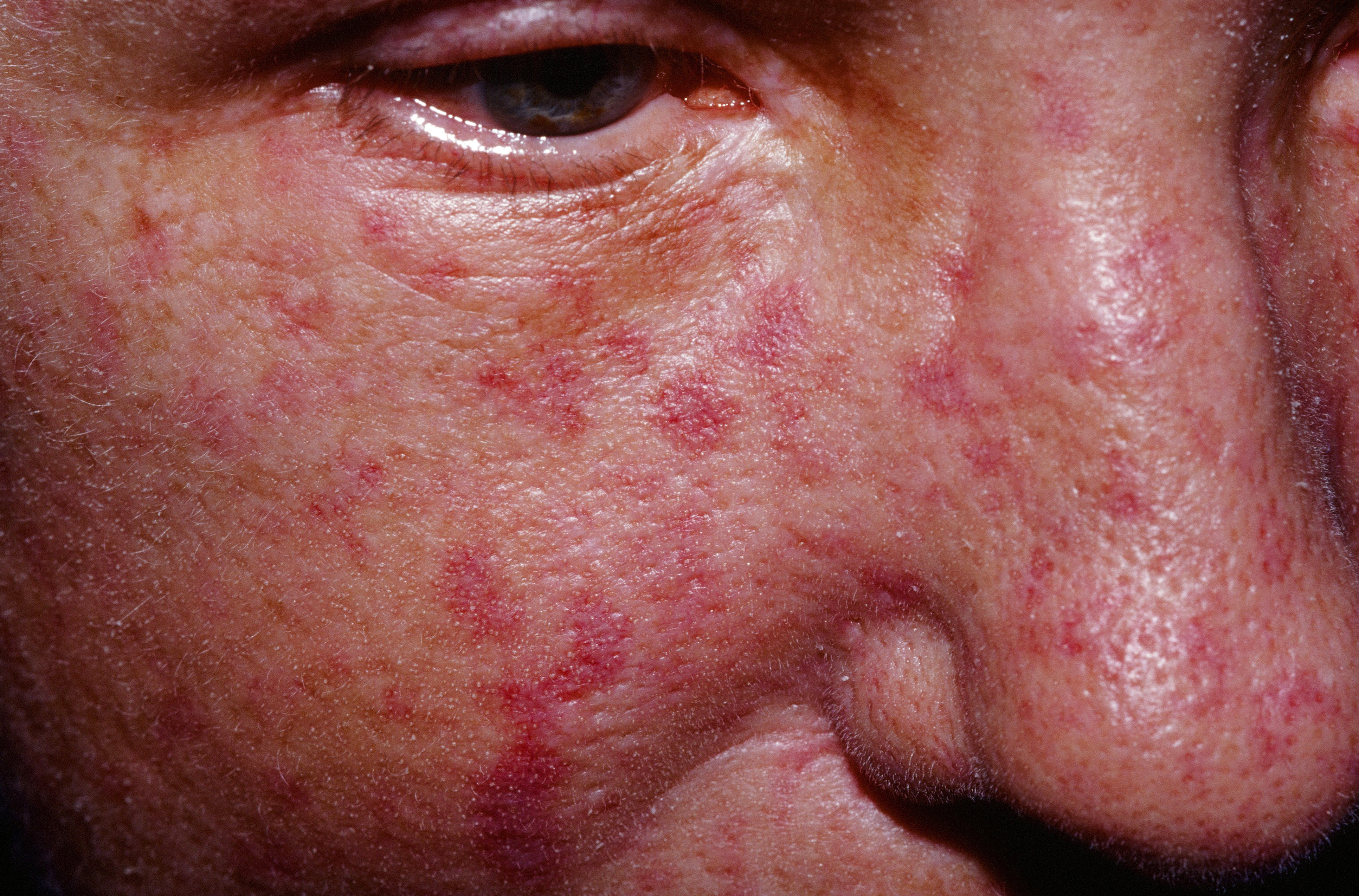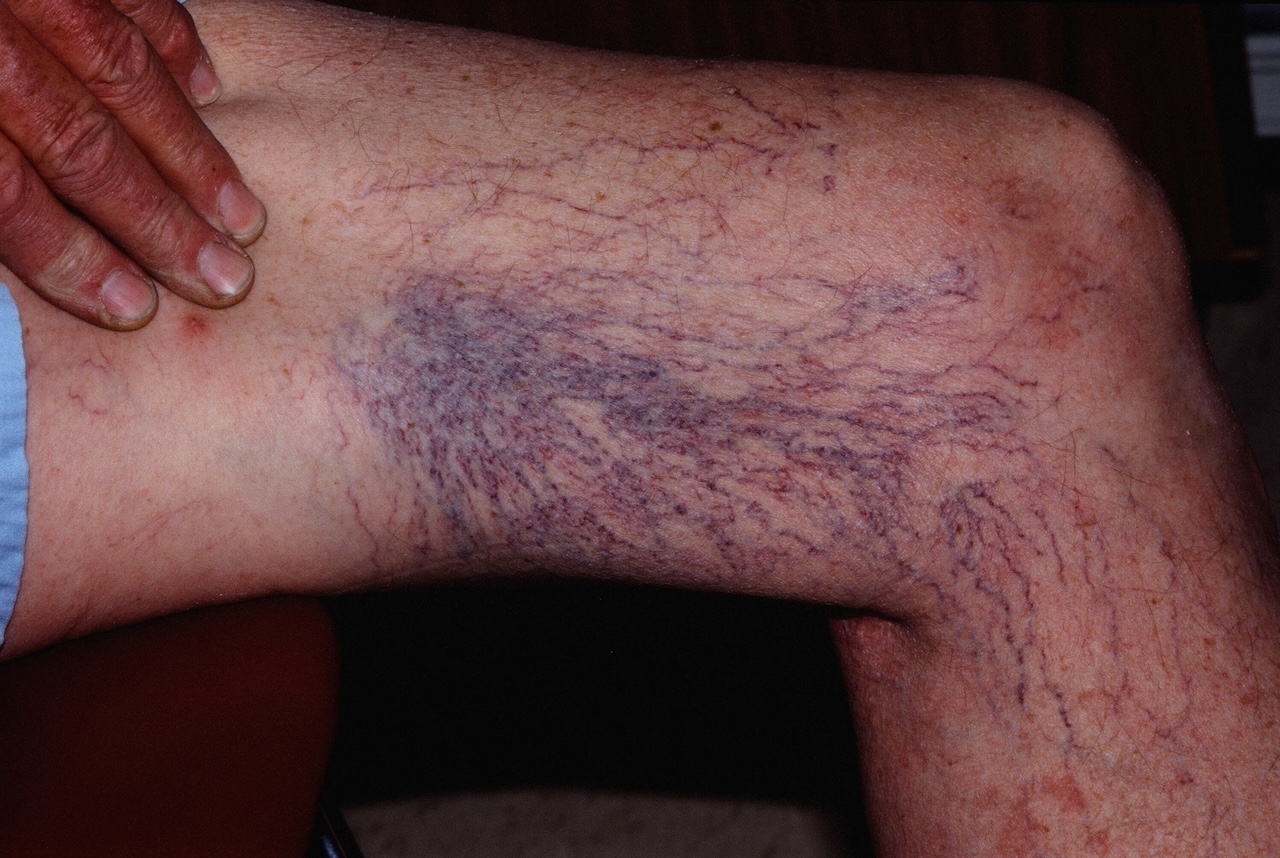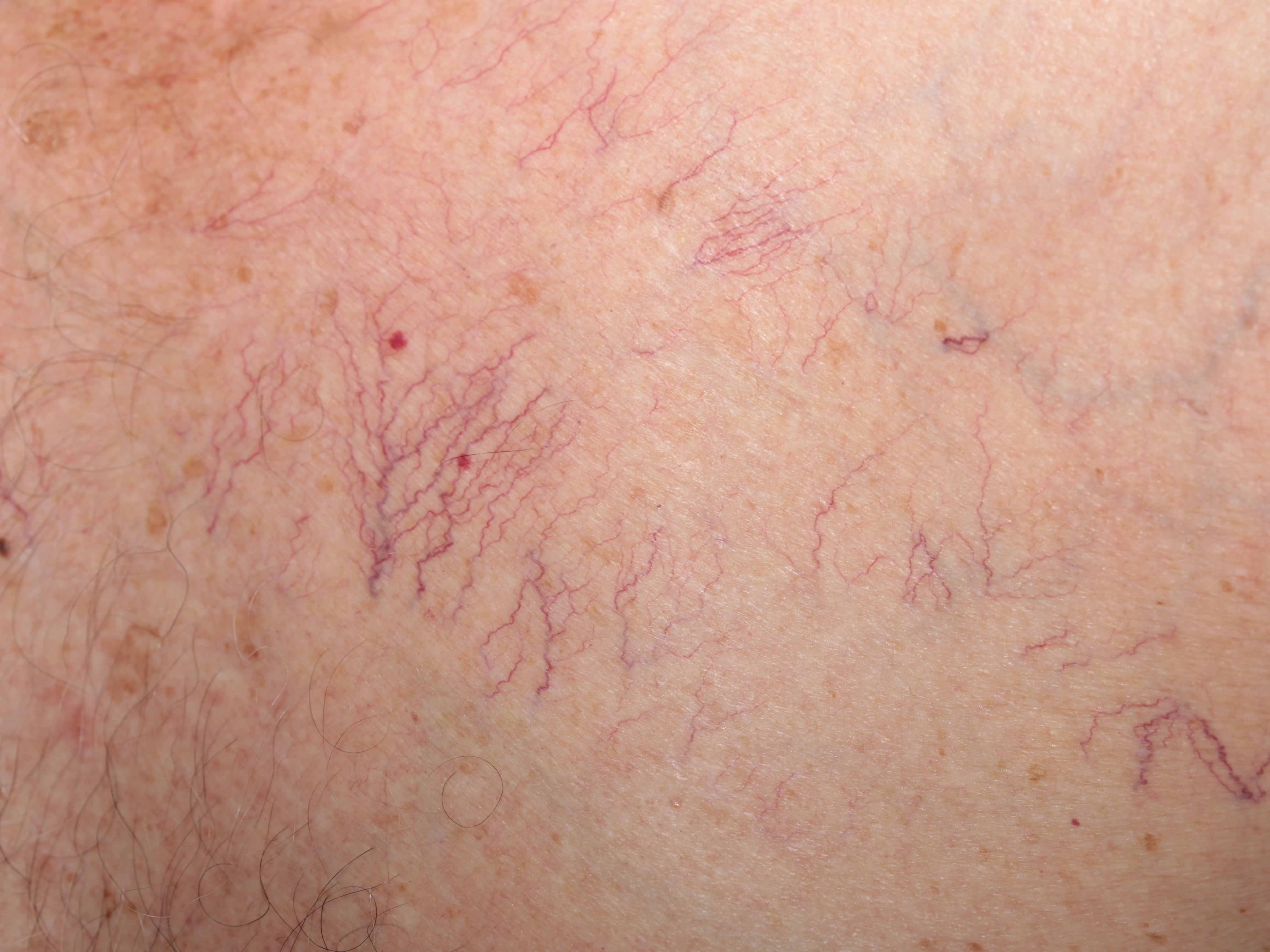
Many facial telangiectasias on the cheek. This is NOT rosacea. The pulsed dye laser would be a good treatment for the is patient.

Many facial telangiectasias on the cheek. This is NOT rosacea. The pulsed dye laser would be a good treatment for the is patient.
A telangiectasias is a small, thread-like blood vessel visible just below the skin's surface. The nose and cheeks are the most commonly affected areas. The patient is usually fair-skinned. Sometimes an atrophic actinic keratosis can have telangiectasias. A telangiectatic macule is sometimes called a telangiectatic mat.
Telangiectasias commonly occur on the face of middle-aged and older adults. They may occur in association with rosacea, but they may not. Indeed, a patient with facial telangiectasias without pimples or pustules does not have rosacea. Several drugs--particularly calcium-channel blockers--have been described as causing photodistributed-telangiectasias (e.g. felodipine, nifedipine, amlodipine, and diltiazem). Other risk factors that have been implicated include excessive sun exposure, aging, hormonal variations, smoking, alcohol ingestion, filler implants, topical and systemic corticosteroids and collagen vascular disease.
The costal fringe is a benign and common arcade of telangiectasias near the costal margin of an adult.

These telangiectatic mats of scleroderma can be treated with the PDL.

Arborizing telangiectasias, also known as arborizing vessels, are a specific type of dilated blood vessels (telangiectasias) that appear as a tree-like branching pattern.

Costal Fringe telangiectasias.

Costal Fringe telangiectasias.
Homepage | Who is Dr. White? | Privacy Policy | FAQs | Use of Images | Contact Dr. White